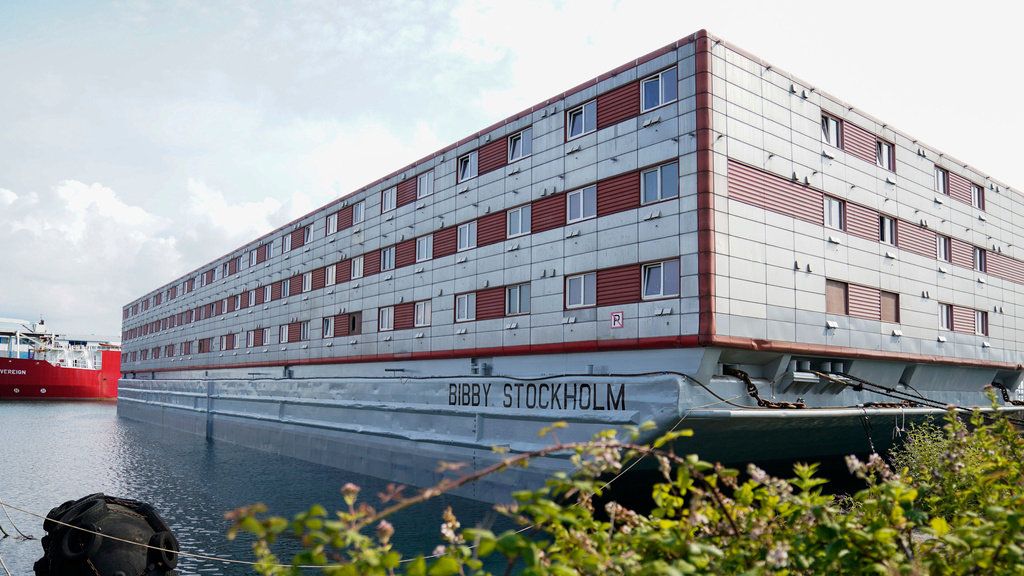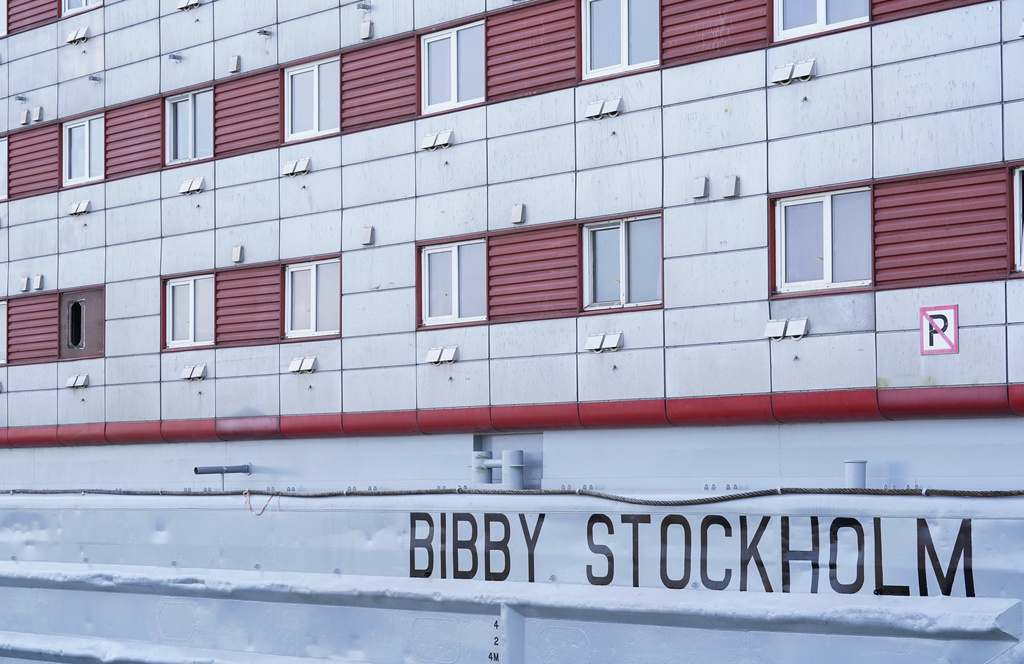The Bibby Stockholm is an accommodation barge which has become a focal point of UK government efforts to tackle the challenge of irregular immigration. Prime Minister Rishi Sunak has put the issue at the center of his political agenda.
His government says using the barge will save money currently spent on housing people in hotels. However, opponents argue that the floating accommodation is neither suitable or safe.
On Friday, within days of coming aboard, all asylum seekers were removed from the barge after Legionella bacteria was found in the water supply.

The Bibby Stockholm can house more than 500 people. /PA via AP
The Bibby Stockholm can house more than 500 people. /PA via AP
Why is it in the news?
The UK has struggled to implement a series of asylum policies, including a plan to send failed applicants to Rwanda which has been blocked by legal wrangling. At the same time, large numbers of small boats continue to arrive on the southern coast, with the number of people crossing illegally in the past five years hitting 100,000.
Therefore, a lengthening delay in implementing plans to use the Bibby Stockholm, first announced in April, has become an embarrassment for the government.
What they say:
"We believe that containing people who have been through traumatising experiences, especially on a floating vessel, is cruel and inhumane." Joint letter from non-governmental organizations to the barge's owner Bibby Maritime.
"This is a cruel and reckless approach to the welfare of asylum seekers, and puts the safety of firefighters at risk." Fire Brigade’s Union
"We are a generous country, we want to support people appropriately and in accordance with the law but it is not an à la carte menu from which people can choose the particular hotel or location that suits them best." UK immigration minister Robert Jenrick.
What is the vessel like
Measuring 90 meters by 27 meters, the barge's capacity has been expanded to 500 occupants over three levels who will share cabins and converted communal rooms. It offers Wifi and leisure facilities such as a gym and games room. Residents will be allowed to leave as they wish but the UK government claims there is a low risk of any not returning, as this would jeopardise their asylum claims.

Rooms are shared. /PA via AP
Rooms are shared. /PA via AP
Recent timeline
April - UK government announces plans to use the Bibby Stockholm to house asylum seekers
May 9 - The barge arrives in UK waters and stops in Falmouth
July 18 - Bibby Stockholm arrives in Portland and is greeted by protesters
August - The Fire Brigades Union writes to the government to raise safety concerns
August - The first 15 asylum seekers board the barge
August - All residents are removed from the barge after Legionella bacteria is discovered

The vessel is almost 50 years old but has been refurbished. /PA via AP
The vessel is almost 50 years old but has been refurbished. /PA via AP
Previous history
1976: The barge was constructed
1992: It was converted into an accommodation vessel
1994: It was used to accommodate homeless people in Hamburg, Germany
2005: The Dutch government used the barge to house asylum seekers but scrapped the project after undercover reporting about conditions onboard
2013: It provided berths for oil workers in the North Sea
Subscribe to Storyboard: A weekly newsletter bringing you the best of CGTN every Friday